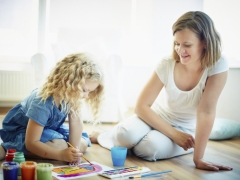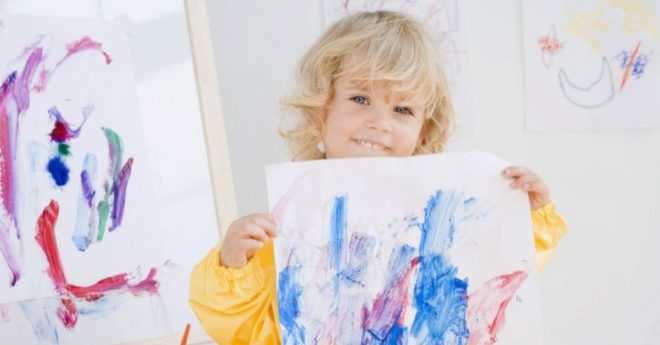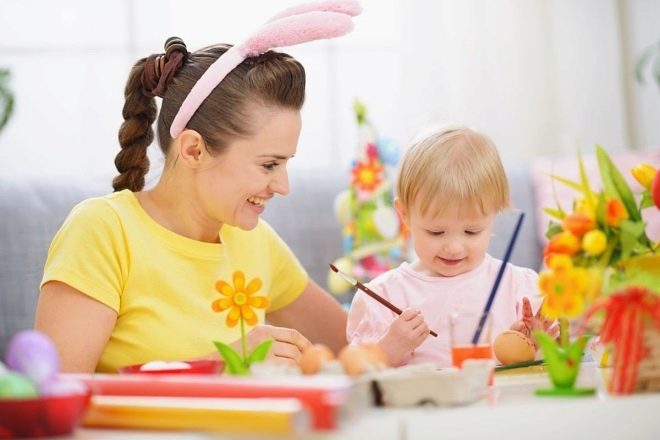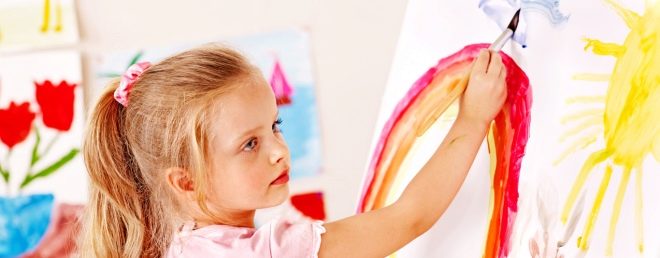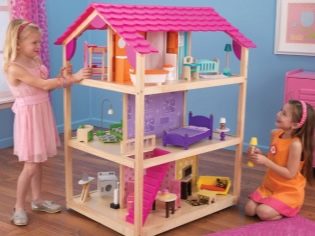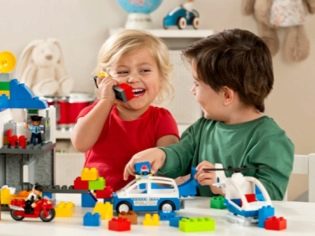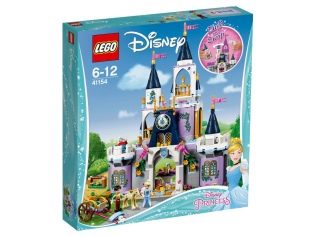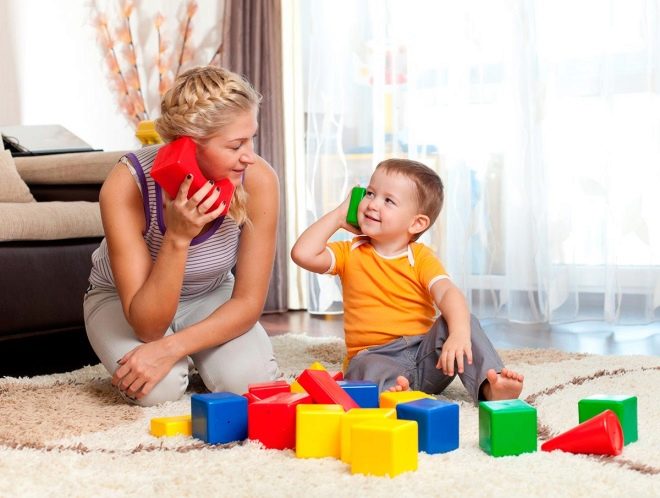Development of creative skills in children
Preschool and younger school age is a time when children are actively manifested in their creativity and desire to create. They compose stories, spend hours drawing, invent their own language. Creativity is useful in any, even the most distant from the creative profession, and, understanding this, parents try to pump the abilities of their children to the maximum. But the comprehension of the world of the arts does not always proceed as they assume: the child, it turns out, does not instantly give out Mozart's sonatas and does not write Picasso's abstractions.
We describe how to cope with creative development and help the process.
We strive to understand the crumbs: the differences in the perception of the child and the adult
Adults are accustomed to what is most important the result of their efforts. For children, it's a little different. The first time, when the kid is consciously trying to create something, for example, a picture, he is so keen on the process that the result is a completely unattractive brown spot on the sheet.
This is due to the fact that the crumbs first need to know how his tools for creativity work.
He may be so interested in mixing colors that he will forget about the house that he was asked to paint. Before being bothered by the shape of this house and the color of the curtains in the windows, the kid needs to figure out how to get that same green shade. He needs to reconcile, with how much water to mix paint, and realize why there is a glass of water in front of him at all.
Of course, all this concerns not only drawing, but also any other creativity. After giving the baby a xylophone, you will not hear a coherent melody immediately and you will not even see a distinct interest in creating this melody. First, the baby needs to experience how the tool works and study it more or less independently.
In the end, creativity for children is primarily research and discovery, and only then the result. The desire to be proud of their creations comes a little later, when the basic processes have become extremely clear.
The best way to help overcome this stage and start creating is not to interfere. Give your child space and time, answer his questions if he asks them.
And when he proudly plays his first improvisation and shows the first brown-brown ball, painted with expensive gouache, control your facial expressions and show interest in the creation. Ask him what colors he interfered with and why, which bars in the xylophone most often pounded. Give impetus to his curiosity, and over time, the result of the efforts will begin to excite the baby more and more, and you - more and more to please.
Stimulate the emergence of ideas
Another question that confronts parents is the secondary nature of the child’s creations. The desire to draw the same cartoon characters, the “composition” of the story he had just heard from his parents, but with altered names, endlessly identical coloring — all this seems to say that the crumbs have no ideas of their own. As if he is not a creative person at all. All such experiences moms and dads are understandable, but in vain.
After all, in order to create something unique, you first need to go through a stage of imitation. This, by the way, is applicable not only to children, but also to adult artists, musicians, writers ... It is imitation that helps to form your own vision. Gradually, the baby will go beyond what has already been seen or heard, and he will begin to generate ideas.
To help him start creating his own masterpieces, first help him with the creation of "fan fiction": ask him to recreate his favorite picture or comic, to invent adventures for the heroes of a fairy tale or cartoon.
Besides, it is necessary to develop figurative thinking in general. And here it is important to act not only within the framework of the chosen drawing or music. A variety of games and activities will help you to work on your imagination: from a discussion of cloud shapes to puppet tea parties. Well pumps fantasy and design - occupation, which is often attributed to the development of purely mathematical skills.
Useful purchases
In fact, the assembly of bright figures, not limited to certain rules, will help the child to realize their abilities and more fantasize. This process is interesting to combine with role-playing games. For example, a little fan of classic fairy cartoons from six years old will suit Lego® Disney ™ "Magic Cinderella Castle" (art. 41154). While the young princess is collecting a beautiful palace, she can invent new adventures for Cinderella and her friends, and at the same time feel the royal persona. Ask which of the rooms the heroine will sleep in, what she will do all day, where the horse will live, where they will go along with the prince. Let the child continue the favorite fairy tale and tell you what is the "happily and happily" with which the famous story ended.
It is important not to restrict children and not to say that this is generally not the case, and in fact everything would be different. You'd better ask why the baby decided that the princess and the prince would open an animal shelter in her castle.
By asking the questions “why?”, “Why?”, “How?”, You help build logical chains, organize cause-effect relationships and, at the same time, fantasize.
At the same time, it is already important for children in early school age to provide personal space. Participate in the process, but let the kid spend some time alone with his work - make up cues for the characters, draw rainbows and knock on the xylophone.
About what games can be used to develop the creative abilities of the child, see the following video.
